Publications
Search publications
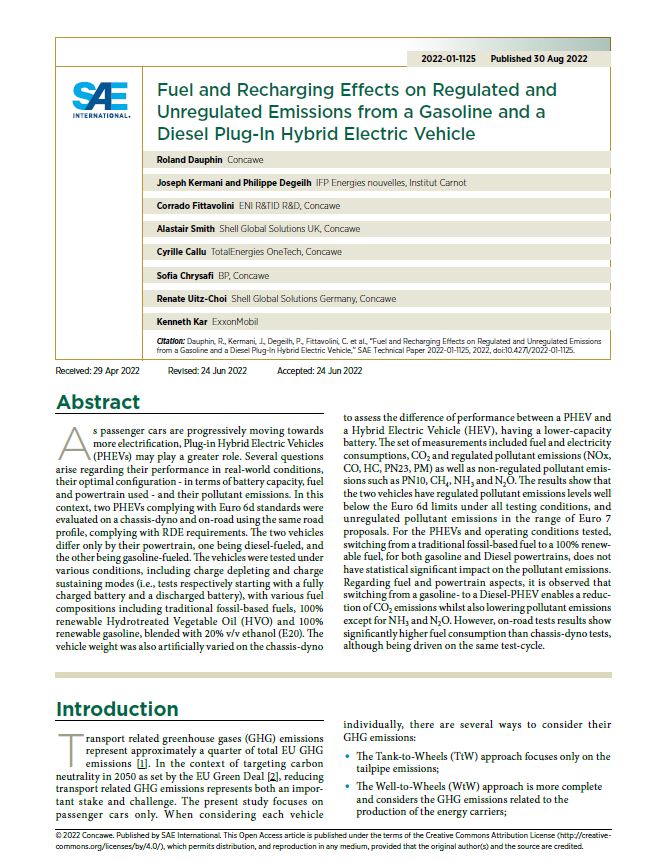
November 24, 2022
Fuel and Recharging Effects on Regulated and Unregulated Emissions from a Gasoline and a Diesel Plug-In Hybrid Electric Vehicle
As passenger cars are progressively moving towards more electrification, Plug-in Hybrid Electric Vehicles (PHEVs) may play a greater role. Several questions arise regarding their performance in real-w...
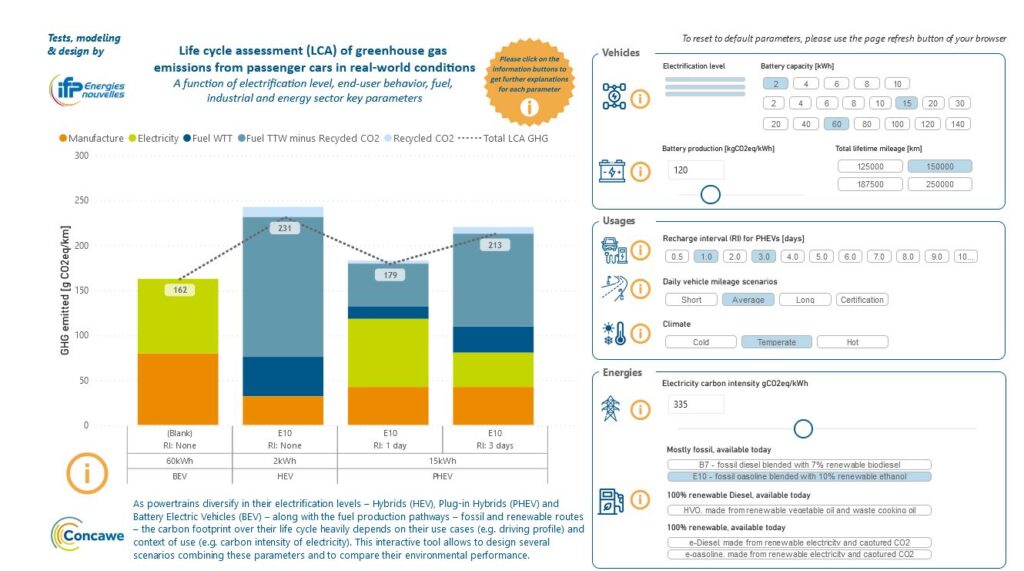
November 17, 2022
Interactive tool: Cars CO2 Comparator
From a climate perspective, it does not matter whether the greenhouse gases are emitted during the production of the car or of the energy carrier, or at the tailpipe. From that perspective, only life-...
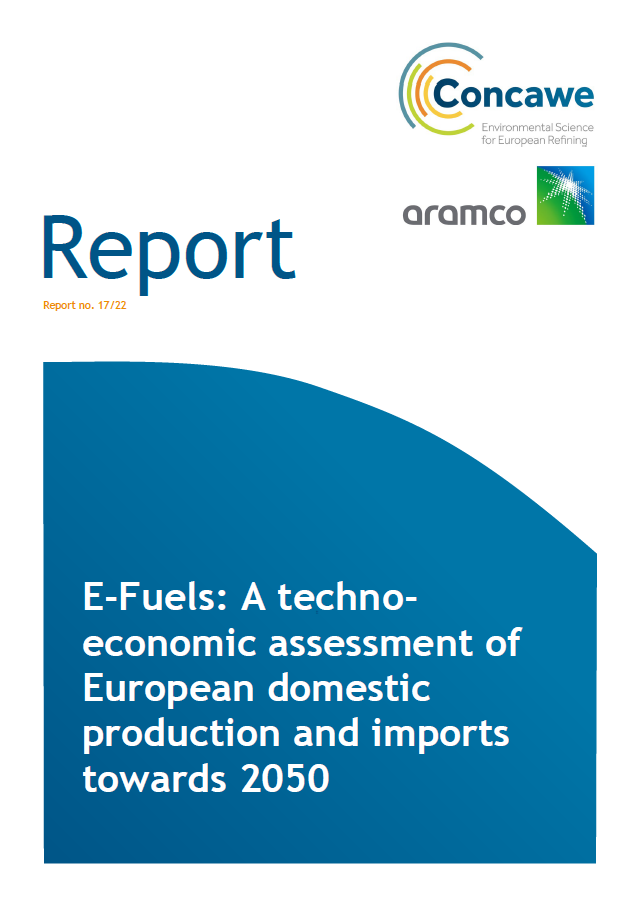
November 7, 2022
E-Fuels: A techno-economic assessment of European domestic production and imports towards 2050 (Concawe Report 17/22)
Report no. 17/22: Concawe and Aramco have jointly commissioned this study, aiming to conduct a techno-environmental (Part 1) and economic (Part 2) analysis of different e-fuels pathways produced in di...

November 4, 2022
Petroleum refinery effluent contribution to chemical mixture toxic pressure in the environment
Petroleum refinery effluents (PRE) are wastewaters from industries associated with oil refining. Within Europe, PREs are regulated through local discharge permits and receive substantial treatment bef...
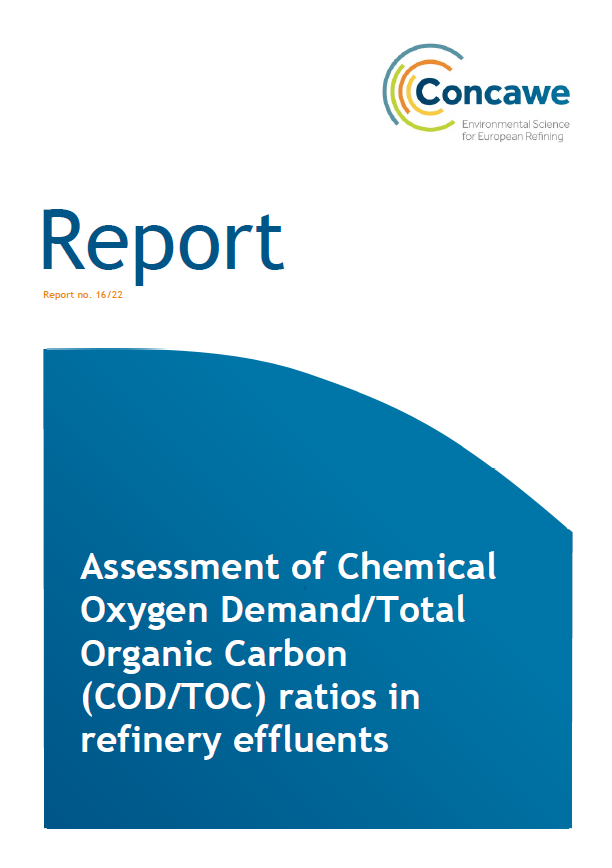
September 15, 2022
Assessment of Chemical Oxygen Demand/Total Organic Carbon (COD/TOC) ratios in refinery effluents
Report no. 16/22: Chemical Oxygen Demand (COD) analysis is one of the most commonly used analytical methods to indirectly measure organic pollutants in effluent waters. The standard COD methods use po...
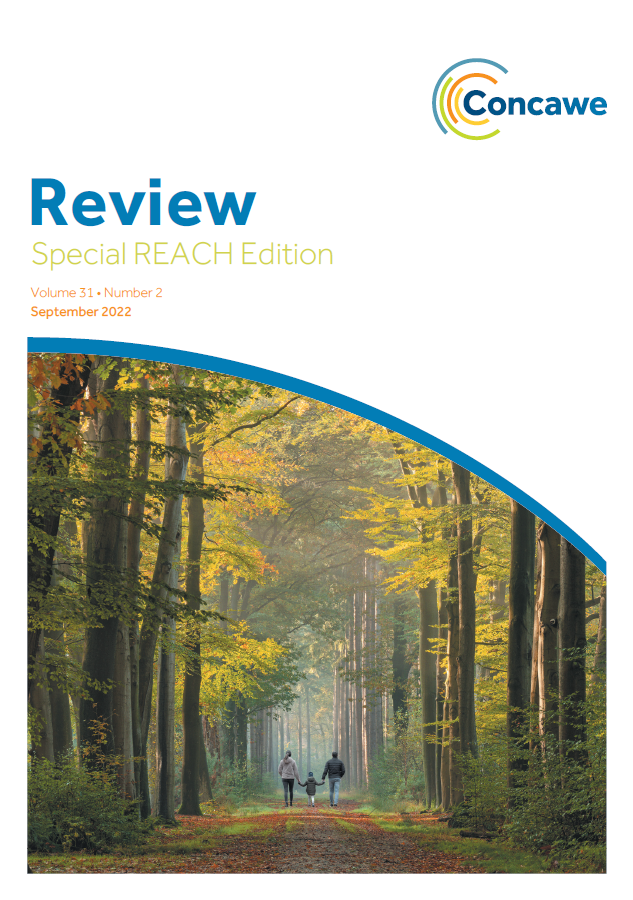
September 6, 2022
Concawe Review Special REACH
Following the REACH registration phase, ECHA began the substances evaluation phase in 2012. The proof of similarity and subsequent justification of read-across between Concawe’s substances, which is...
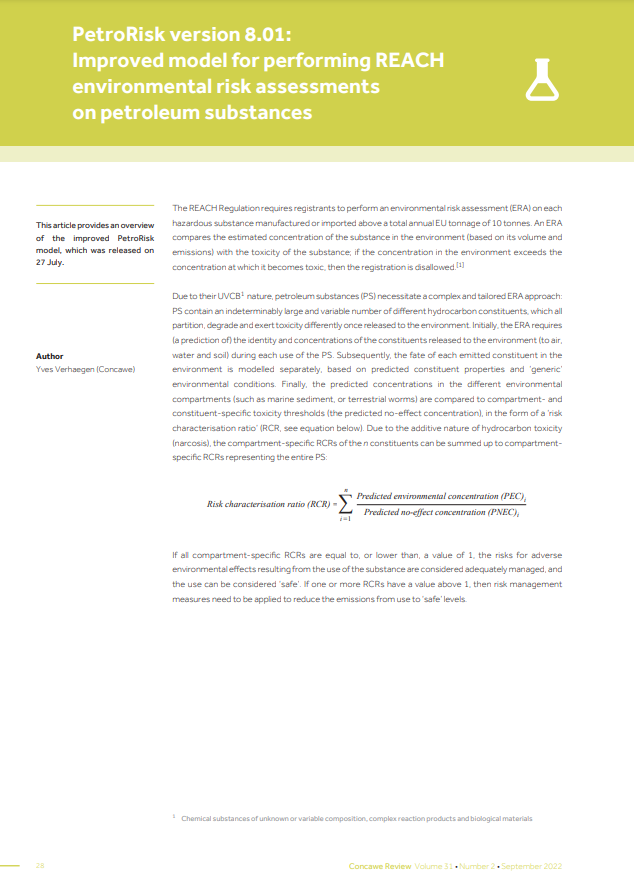
September 6, 2022
PetroRisk version 8.01: Improved model for performing REACH Environmental Risk Assessments on petroleum substances
Concawe has updated the PetroRisk model used to calculate the environmental risk assessments (ERAs) for petroleum substances needed for REACH registration dossiers. The updates result in a model which...
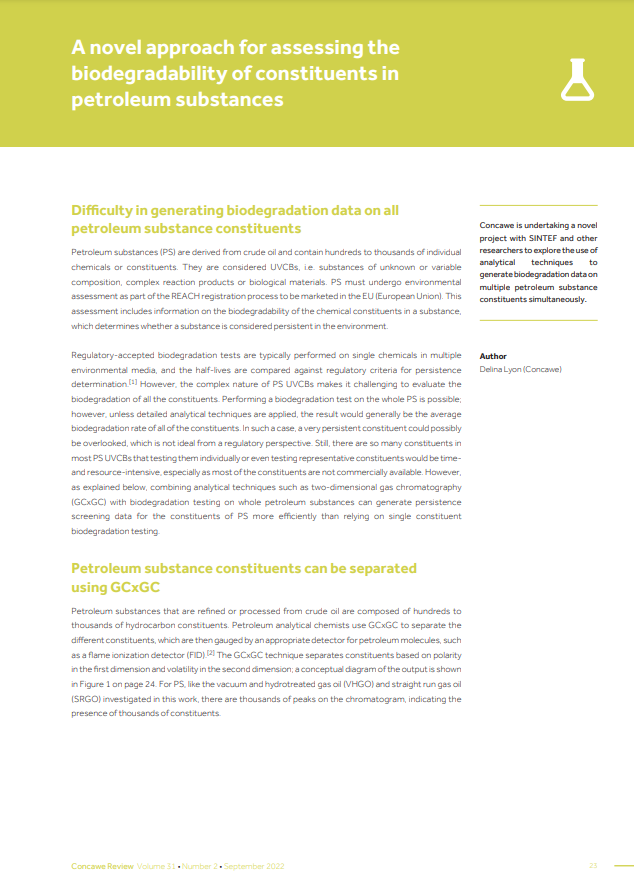
September 6, 2022
A novel approach for assessing the biodegradability of constituents in petroleum substances
Petroleum substances contain hundreds to thousands of constituents, making it very difficult to generate biodegradation data on all of those constituents individually.
Concawe is undertaking a nove...

September 6, 2022
Generation of biodegradability data on petroleum constituents using enhanced tests (OECD guideline 301 F)
To improve the persistence assessment of petroleum substances, Concawe started a testing programme for several hydrocarbons. Ready biodegradability tests were proposed on six 3-ring polycyclic aromati...
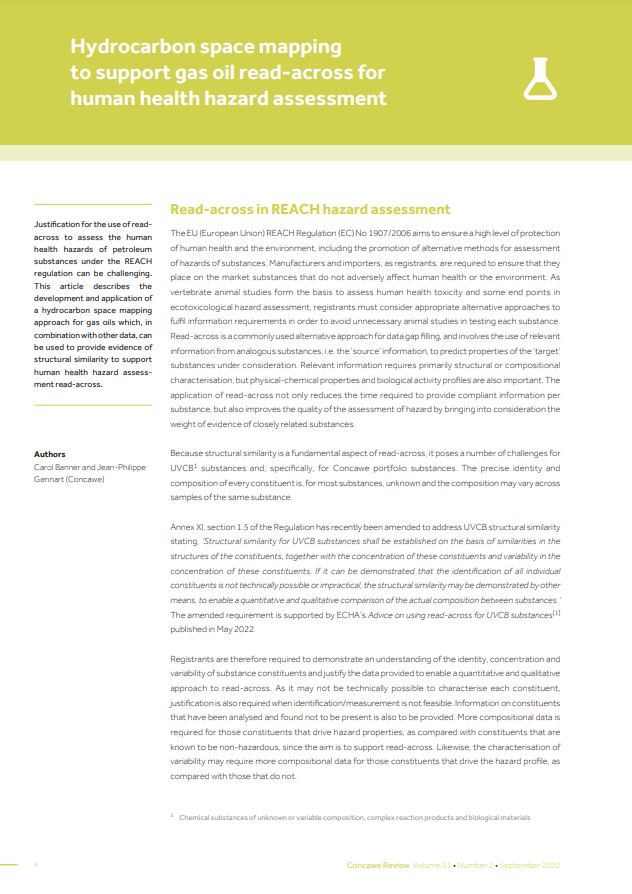
September 6, 2022
Hydrocarbon space mapping to support gas oil read-across for human health hazard assessment
As vertebrate animal studies form the basis for assessing certain human health and ecotoxicity hazards under the EU (European Union) REACH regulation, appropriate alternative approaches to fulfil info...
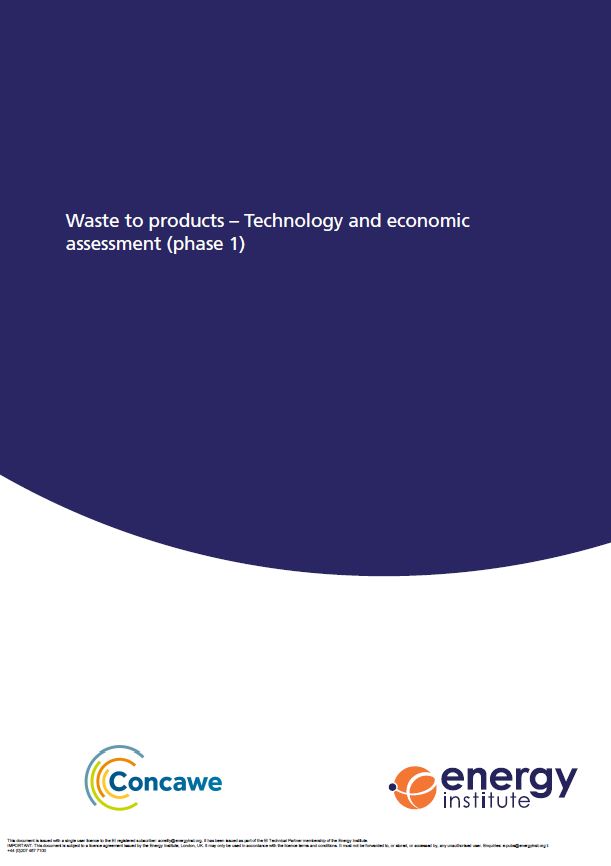
August 22, 2022
Waste to products – Technology and economic assessment (phase 1)
The EMG and Soil Wastes and Groundwater group (SWG) of the EI and Concawe have commissioned E4tech to conduct a technical analysis of waste-to-products (WTP) technologies that could be integrated with...
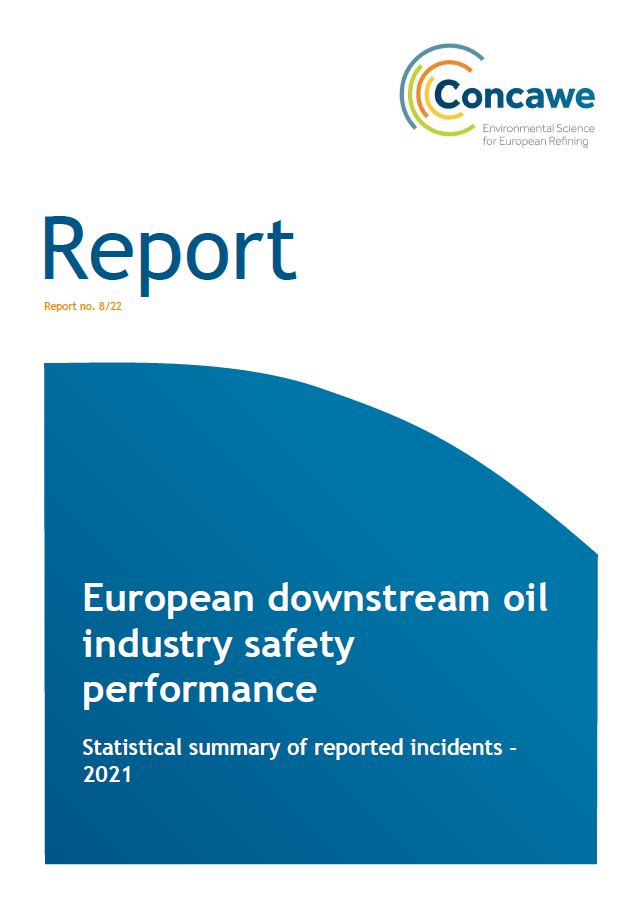
August 4, 2022
European downstream oil industry safety performance
Report no. 8/22: The 2021 annual report on European downstream oil industry safety performance presents work-related personal injuries for the industry’s own employees and contractors and process sa...
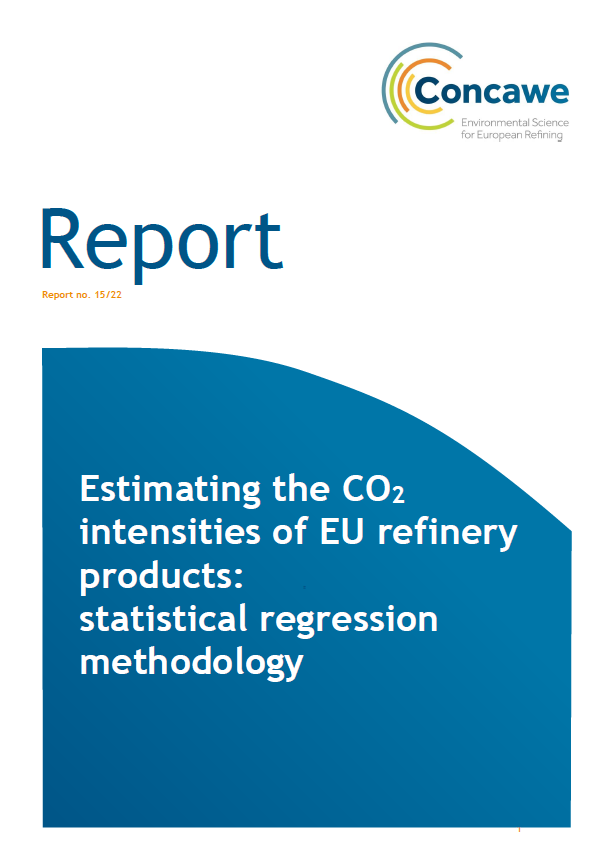
July 26, 2022
Estimating the CO2 intensities of EU refinery products: Statistical Regression Methodology
Report no. 15/22: This study aims at estimating the CO2 intensity of petroleum products at the gate of an average EU refinery (refining step of the production process, excluding upstream and downstrea...
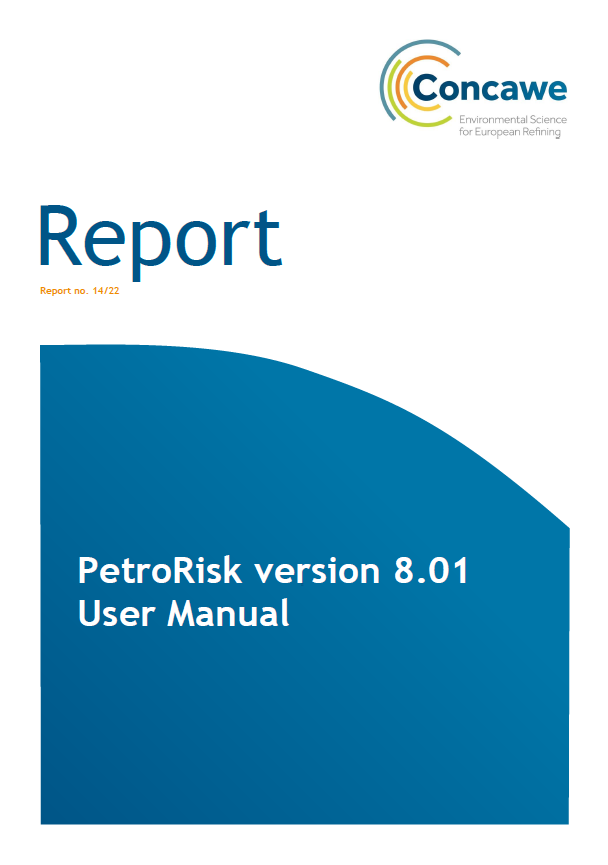
July 22, 2022
PetroRisk version 8.01 – User Manual
Report no. 14/22: This report provides a detailed description of version 8.01 of Concawe’s PetroRisk model: (1) conceptual design, (2) main improvements compared to previous versions, (3) KNIME, the...
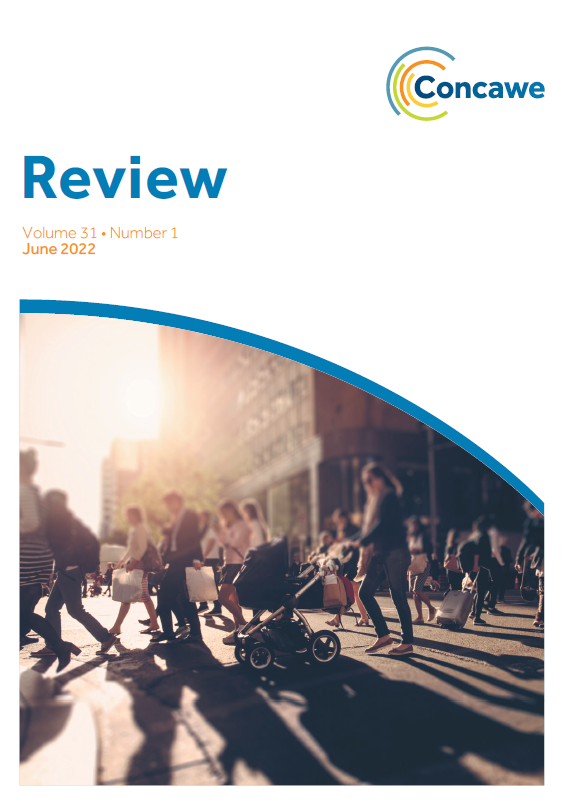
July 15, 2022
Concawe Review 31.1
Evaluation of pathways to decarbonise transport, simulations of the impact of our products on air quality, evaluation of the safety of our industrial and supply activities: the articles in this editi...
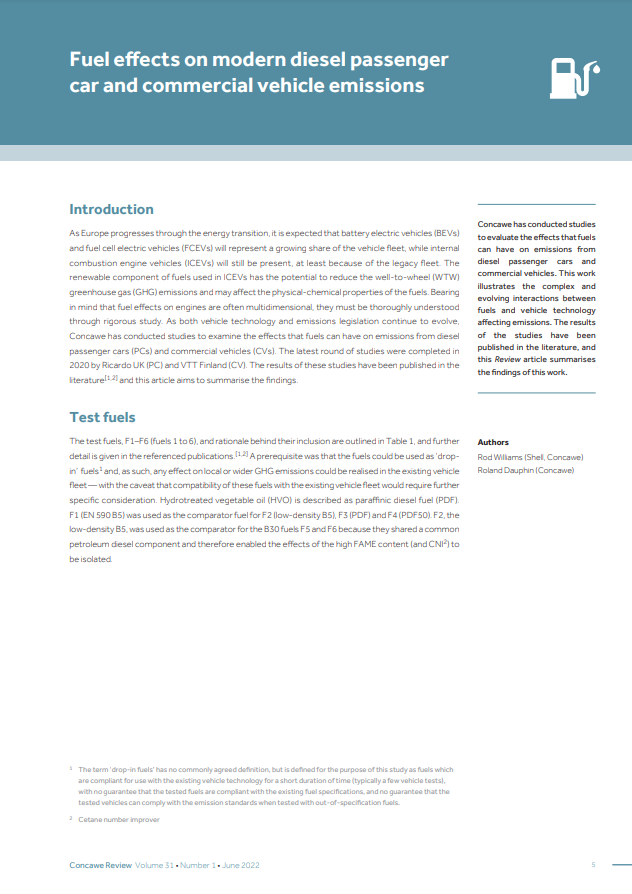
July 15, 2022
Fuel effects on modern diesel passenger car and commercial vehicle emissions (Concawe Review 31.1)
As both vehicle technology and emissions legislation continue to evolve, Concawe has conducted studies to examine the multidimensional effects that fuels can have on greenhouse gases (GHGs) and pollut...
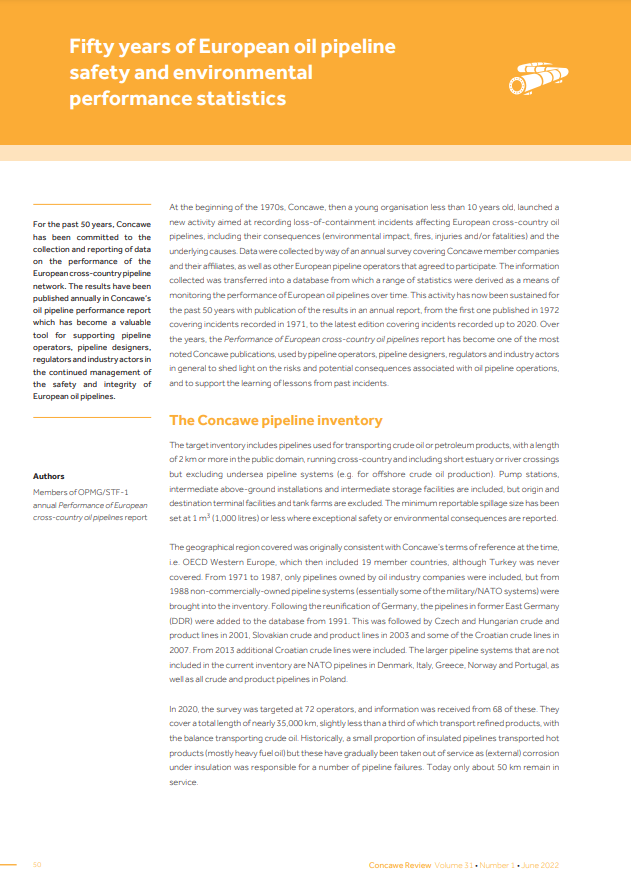
July 15, 2022
Fifty years of European oil pipeline safety and environmental performance statistics (Concawe Review 31.1)
At the beginning of the 1970s, Concawe, then a young organisation less than ten years old, launched a new activity aimed at recording loss-of-containment incidents affecting European cross-country oil...
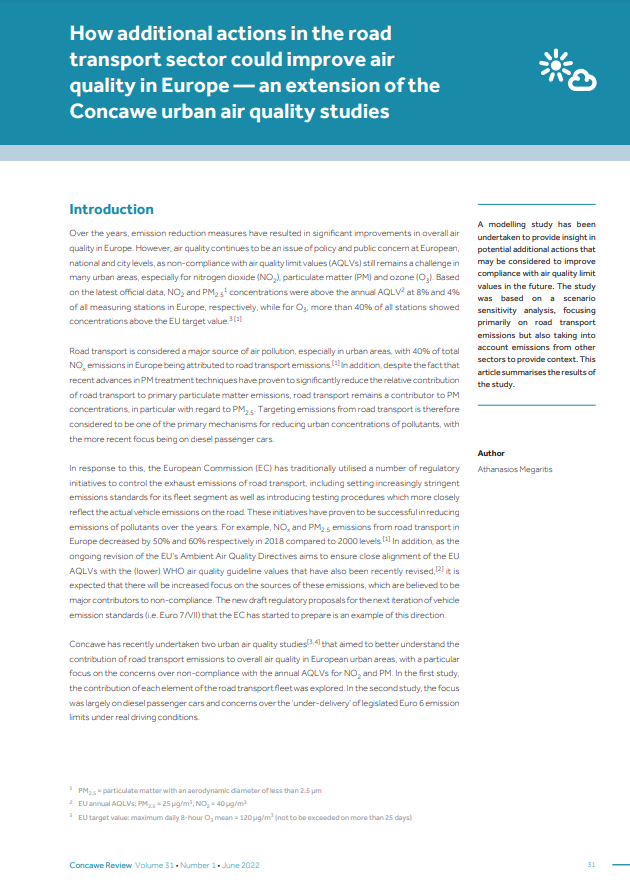
July 15, 2022
How additional actions in the road transport sector could improve air quality in Europe — an extension of the Concawe urban air quality studies (Concawe Review 31.1)
This article presents results from a modelling study carried out to examine how concentrations of the major urban pollutants (i.e. nitrogen dioxide (NO2), particulate matter (PM) and ozone (O₃)) wou...
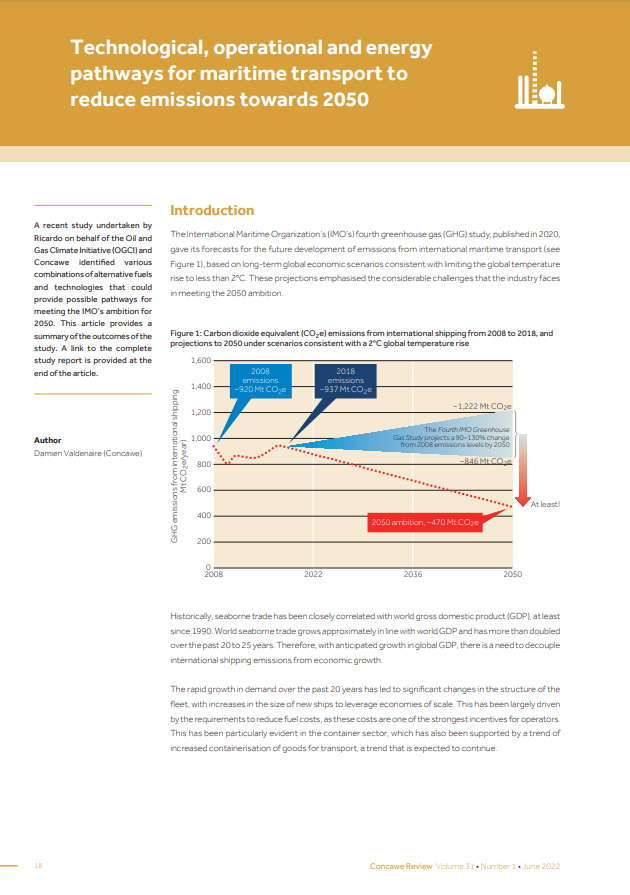
July 15, 2022
Technological, operational and energy pathways for maritime transport to reduce emissions towards 2050 (Concawe Review 31.1)
This article provides a summary of a ‘deep dive’ study into the future development of emissions from international maritime transport. The study is part of Concawe’s Low Carbon Pathways project,...
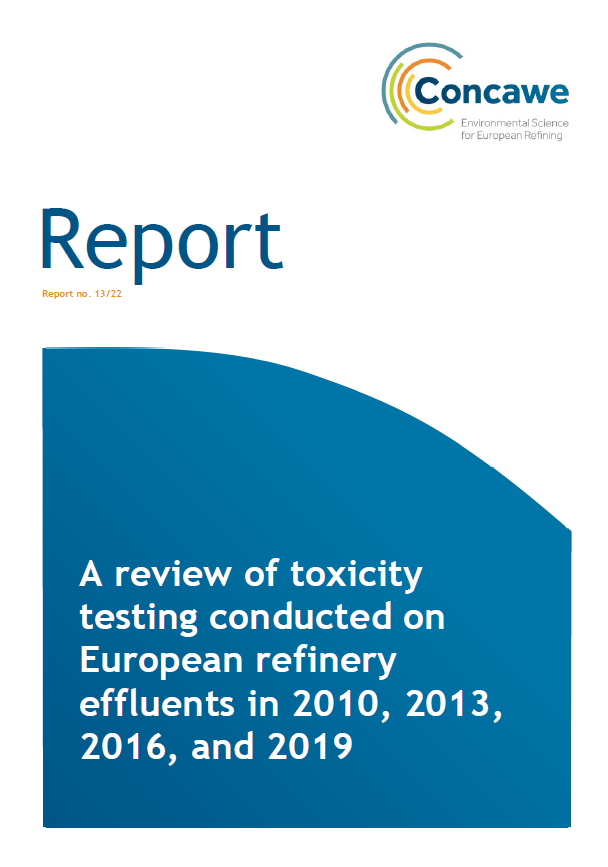
July 15, 2022
A review of toxicity testing conducted on European refinery effluents in 2010, 2013, 2016, and 2019
Report no. 13/22: This report provides an assessment of the extent to which toxicity testing is carried on European refinery effluents, and the types of tests being used. The analysis is based on resp...
Subscribe to publications
You can subscribe here to receive notifications about new Concawe publications (Technical Reports and the Concawe Review)